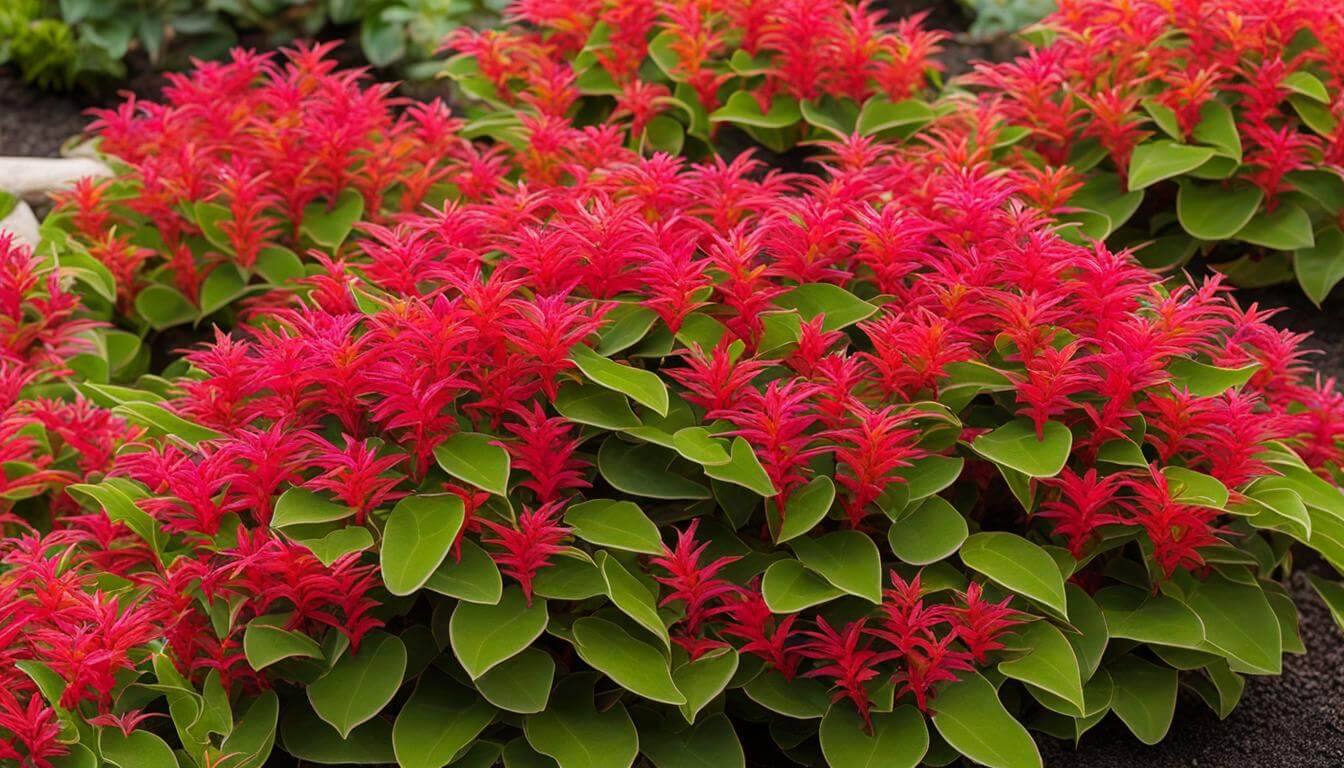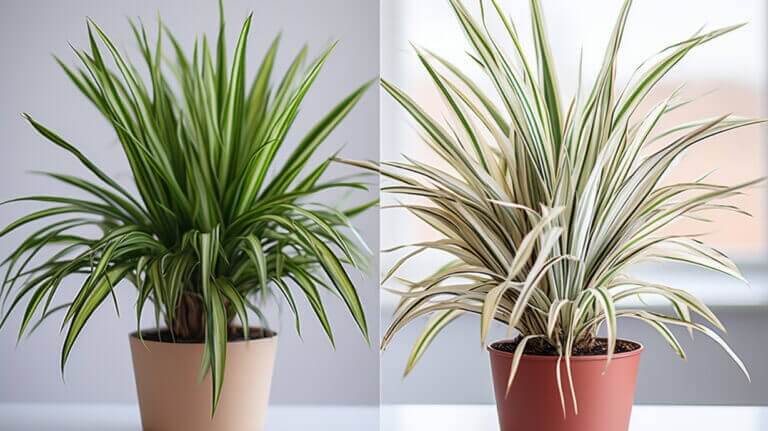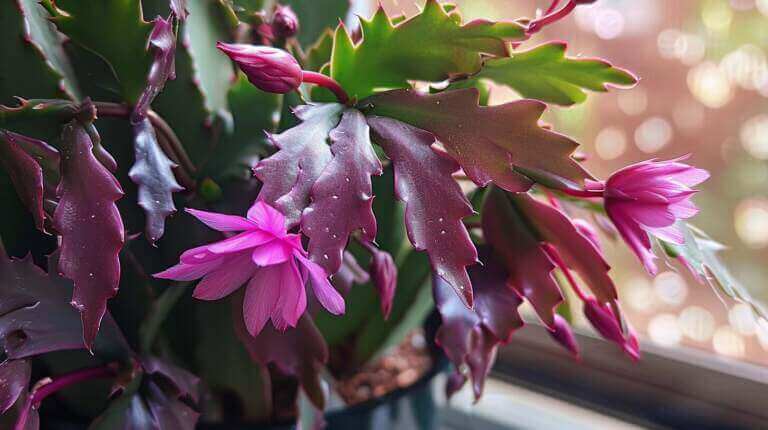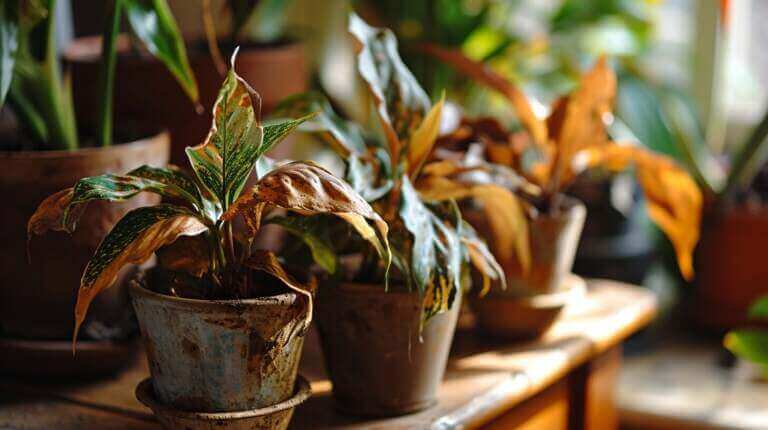The flaming Katy, also known as Kalanchoe blossfeldiana, is a stunning succulent plant that adds vibrancy to any indoor space. To ensure the health and well-being of your flaming Katy, it’s important to provide the proper care and attention it needs. From watering and sunlight exposure to fertilizing and pruning, here are some essential care tips to keep your flaming Katy plant healthy and thriving.
First and foremost, watering is crucial for the well-being of your flaming Katy. It’s important to water the plant thoroughly when the soil feels dry to the touch. Avoid overwatering as it can lead to root rot. Additionally, ensure that the pot has proper drainage to prevent waterlogging.
Sunlight exposure is another vital aspect of caring for your flaming Katy plant. This succulent thrives in bright, indirect sunlight. Place it near a window where it can receive adequate light but is protected from direct sunlight, which can cause leaf burn.
Fertilizing is essential for the growth and blooming of your plant. Use a balanced water-soluble fertilizer specifically formulated for indoor plants. Follow the instructions on the fertilizer packaging for proper application and frequency.
Pruning is necessary to maintain the shape and health of your flaming Katy. Remove any dead or yellowing leaves, spent flowers, or leggy stems. Pruning also helps promote new growth and encourages the plant to bloom again.
If you wish to propagate your flaming Katy, it can be done through leaf or stem cuttings. Simply take a healthy leaf or stem and place it in a well-draining potting mix. Keep the soil moist but not overly wet until new roots and shoots emerge.
Repotting is required when your flaming Katy outgrows its current pot. Choose a pot that is slightly larger than the current one and filled with well-draining soil. Gently remove the plant from its old pot, loosen the roots, and place it in the new pot. Be careful not to damage the roots during the process.
By following these care tips and giving your flaming Katy plant the attention it deserves, you can enjoy a healthy and flourishing indoor plant that adds beauty to your living space.
Key Takeaways:
- Proper watering is crucial for the health of your flaming Katy. Water thoroughly when the soil feels dry.
- Place your flaming Katy in bright, indirect sunlight to ensure its growth and blooming.
- Fertilize your plant with a balanced water-soluble fertilizer formulated for indoor plants.
- Prune regularly to maintain the shape and health of your flaming Katy.
- Propagate your plant through leaf or stem cuttings for new growth.
- Repot your flaming Katy when it outgrows its current pot, using well-draining soil.
Flaming Katy: Origin, Characteristics, and Varieties
The flaming Katy, scientifically known as Kalanchoe blossfeldiana, is a captivating succulent plant that originates from Madagascar. This evergreen shrub belongs to the Kalanchoe family in the Crassula genus and is renowned for its vibrant scarlet flowers. However, it comes in a variety of stunning colors, allowing you to choose the perfect hue to complement your indoor space.
Flaming Katy is a petite succulent that typically grows to a maximum height of around 30cm. Its blooming season occurs from February to June, making it a delightful addition to any home or garden during the early months of the year. Some popular varieties of Kalanchoe blossfeldiana include ‘Calandiva’ with its double flowers, ‘Tom Thumb’ which boasts a smaller size, ‘Goldrand’ known for its larger blooms, and ‘Orange Triumph’ displaying bold orange blossoms.
Key Characteristics
Aside from its striking flowers, Flaming Katy exhibits several noteworthy characteristics. As a succulent, it possesses fleshy leaves and stems that store water, enabling it to survive in arid conditions. Additionally, this plant is considered a short-day plant, meaning it requires shorter daylight periods to trigger its blooming cycle.
| Characteristic | Description |
|---|---|
| Succulent | Thick, fleshy leaves and stems for water storage |
| Short-Day Plant | Requires shorter periods of daylight to bloom |
With its unique features and stunning blossoms, Flaming Katy is sure to captivate any plant enthusiast. In the following sections, I will guide you through the essential care tips and proper techniques for growing and maintaining these delightful succulents.
Growing and Caring for Flaming Katy Plants
Flaming Katy plants, also known as Kalanchoe blossfeldiana, are delightful additions to any garden or indoor space. To ensure their optimal growth and health, it is important to provide them with the right planting location, proper care, and attention to their specific needs.
Planting Location
When selecting a location to plant your Flaming Katy, choose a spot that receives bright but indirect sunlight. Flaming Katy plants prefer temperatures between 18 and 22°C, so be mindful of placing them in an area that maintains this temperature range. If you plan to grow them outdoors, make sure to find a rain-protected spot during the flowering months of May to August.
Care Tips
Proper care is essential to the well-being of your Flaming Katy. Water the plants only when the soil feels dry to the touch, as overwatering can lead to root rot. Use low-lime or boiled tap water for watering to avoid mineral build-up in the soil. During the flowering period, fertilize your Flaming Katy with a balanced water-soluble fertilizer to promote healthy growth and vibrant blooms. After the flowering period, prune the plants to maintain their shape and remove any dead or faded flowers.
Treating Yellow Leaves and Other Diseases
If you notice your Flaming Katy has yellow leaves, it may be a sign of under or overwatering. Adjust your watering routine accordingly and make sure the soil is well-draining. Flaming Katy plants are generally hardy and don’t suffer from many diseases. However, they can be susceptible to mealybug infestations. If you spot any signs of pests, treat them promptly with an appropriate remedy or consult a professional for assistance.
By following these care tips, your Flaming Katy plants will thrive and reward you with their beautiful blooms for years to come.
| Planting Location | Care Tips | Treating Yellow Leaves and Other Diseases |
|---|---|---|
| Choose a spot with bright, indirect sunlight | Water when the soil feels dry and use low-lime or boiled tap water | Adjust watering and ensure well-draining soil |
| Temperature between 18 and 22°C | Fertilize during flowering with a balanced water-soluble fertilizer | Treat pests promptly |
| Find a rain-protected spot outdoors | Prune after flowering to maintain shape |
Common Problems and Solutions for Flaming Katy Plants
While the flaming Katy plant is generally hardy and low-maintenance, there are a few common problems that you may encounter. Understanding these issues and their solutions can help you ensure the optimal health and growth of your plant.
Wilting from Overwatering or Dry Soil
One common issue is wilting, which can be caused by both overwatering and dry soil. Overwatering can lead to root rot and suffocate the plant’s roots, while dry soil can result in dehydration and nutrient deficiencies. To resolve these problems, it’s important to find the right balance in watering. Only water the plant when the top inch of soil feels dry and make sure the soil is well-draining. If you notice wilting, adjust your watering schedule accordingly.
Yellow Leaves from Dry Soil or Nutrient Deficiencies
Yellow leaves can indicate dry soil or nutrient deficiencies. If the soil is too dry, the plant may not be able to absorb enough water and nutrients. Additionally, nutrient deficiencies can cause yellowing of the leaves. To address these issues, make sure you are watering the plant properly and providing it with the necessary nutrients. Consider using a balanced water-soluble fertilizer during the plant’s active growing season.
Pests, Mealybugs, and Root Mealybugs
Pests can also pose a problem for flaming Katy plants. Mealybugs are a common pest that can infest the plant and cause damage. They are small, soft-bodied insects that can be recognized by their cotton-like appearance. If you notice mealybugs on your plant, it’s important to take immediate action to prevent further infestation. You can remove them manually using a cotton swab soaked in alcohol or use insecticidal soap. In some cases, the roots of the plant may also be infested with root mealybugs, which can cause wilting and decline in the plant’s health. If you suspect root mealybugs, it may be necessary to replant the flaming Katy in fresh, sterilized soil.
| Problem | Solution |
|---|---|
| Wilting from overwatering or dry soil | Adjust watering schedule and ensure well-draining soil |
| Yellow leaves from dry soil or nutrient deficiencies | Properly water the plant and fertilize as needed |
| Pests, mealybugs, and root mealybugs | Remove mealybugs manually or use insecticidal soap. Replant if root mealybugs are present. |
By being proactive and addressing these common problems, you can ensure the health and vitality of your flaming Katy plant. Regularly inspect your plant for any signs of wilting, yellowing leaves, or pests, and take appropriate action to resolve these issues.
Bringing Flaming Katy Indoors and Repotting
When it’s time to bring your flaming Katy indoors, you’ll want to ensure that the temperature remains above 55 degrees Fahrenheit. This will help the plant thrive in its new indoor environment. Find a spot in your home that receives bright, indirect light, which mimics the natural lighting conditions this plant prefers.
Repotting your flaming Katy annually is important for its continued growth and health. Choose a well-draining pot that is slightly larger than its current one. This will provide the plant with enough space to spread its roots and prevent root rot. Remember, a healthy root system is crucial for a thriving flaming Katy.
If you decide to acclimate your flaming Katy to the outdoors, make sure the night temperatures are consistently above 60 degrees Fahrenheit. Gradually expose the plant to outdoor conditions, starting with a few hours of indirect sunlight and gradually increasing the duration over a week or two. Remember to bring the plant back indoors when temperatures start to drop, as this tropical plant is sensitive to cold temperatures.
FAQ
What is the scientific name for the flaming Katy plant?
The scientific name for the flaming Katy plant is Kalanchoe blossfeldiana.
When does the flaming Katy plant bloom?
The flaming Katy plant blooms from February to June.
What are some popular varieties of the flaming Katy plant?
Some popular varieties of the flaming Katy plant include ‘Calandiva’ with double flowers, ‘Tom Thumb’ which is smaller in size, ‘Goldrand’ which is larger, and ‘Orange Triumph’ with bold orange flowers.
Can I grow flaming Katy plants indoors?
Yes, flaming Katy plants can be grown both indoors and outdoors.
How often should I water my flaming Katy plant?
You should only water your flaming Katy plant when the soil feels dry.
What type of water should I use to water my flaming Katy plant?
It is recommended to use low-lime or boiled tap water to water your flaming Katy plant.
How should I fertilize my flaming Katy plant?
During the flowering period, you can fertilize your flaming Katy plant with a balanced water-soluble fertilizer.
When should I prune my flaming Katy plant?
You should prune your flaming Katy plant after it has finished flowering.
How can I propagate my flaming Katy plant?
You can propagate your flaming Katy plant using cut shoots and leaves.
How should I care for my flaming Katy plant during the winter?
During the winter, you should provide your flaming Katy plant with a rest period by reducing light exposure and watering less.
What are some common problems that flaming Katy plants may face?
Common problems for flaming Katy plants include wilting from overwatering or dry soil, yellow leaves from dry soil, and infestations of mealybugs.
How can I treat yellow leaves on my flaming Katy plant?
To treat yellow leaves on your flaming Katy plant, you should adjust your watering practices and ensure the soil is not too dry.
What should I do if my flaming Katy plant has mealybugs?
If your flaming Katy plant has mealybugs, you should treat them as soon as they are spotted by cutting off affected leaves and using appropriate pest control methods.
How should I bring my flaming Katy plant indoors?
When bringing your flaming Katy plant indoors, ensure that the temperature stays above 55 degrees Fahrenheit and place it in a location with bright, indirect light.
How often should I repot my flaming Katy plant?
It is recommended to repot your flaming Katy plant annually in a well-draining pot, increasing the container size each time.
How can I acclimate my flaming Katy plant to the outdoors?
If acclimating your flaming Katy plant to the outdoors, do so when night temperatures are above 60 degrees Fahrenheit.
When should I bring my flaming Katy plant back indoors?
You should bring your flaming Katy plant back indoors when temperatures begin to drop.







